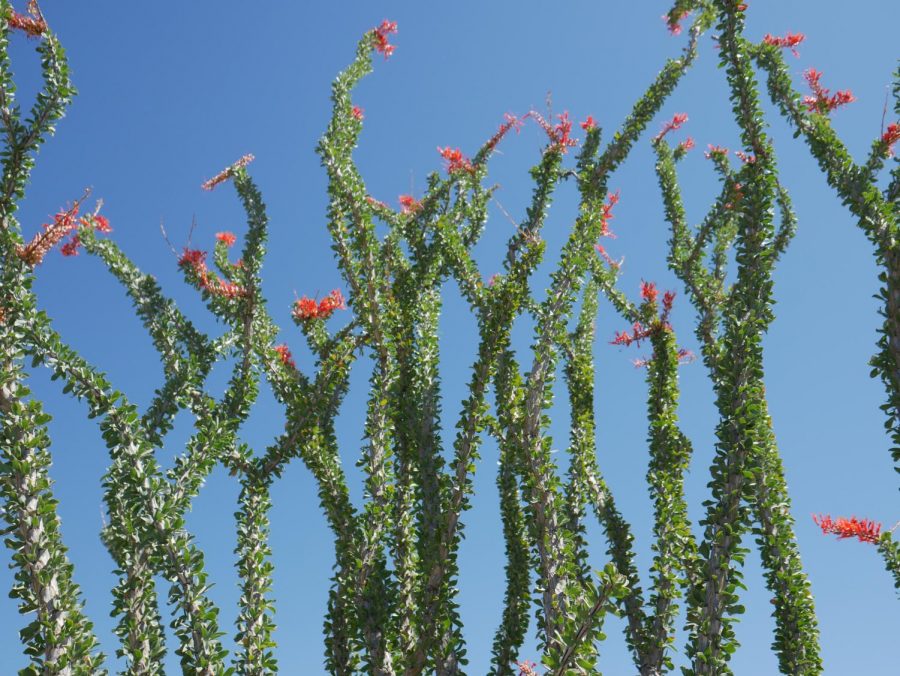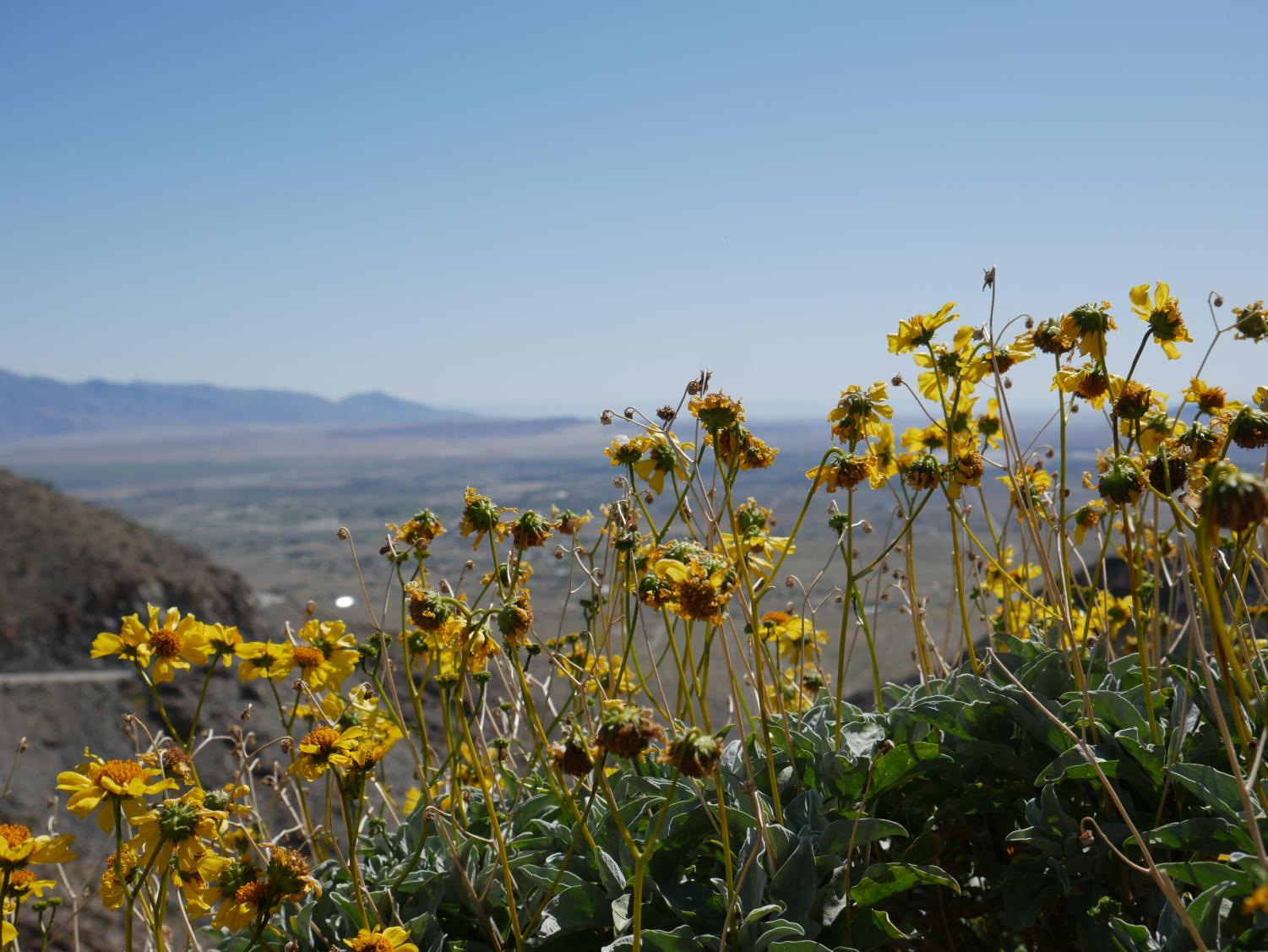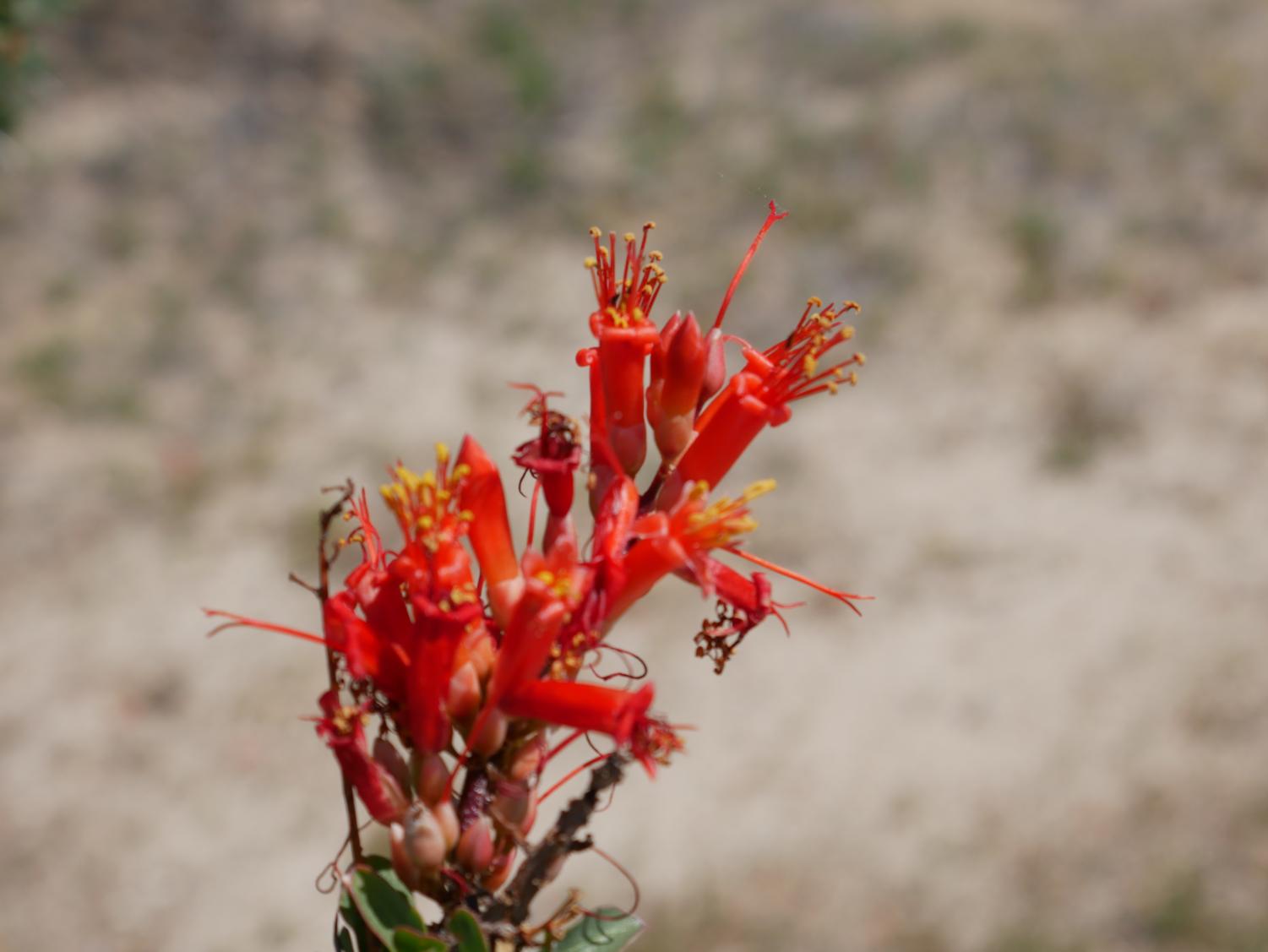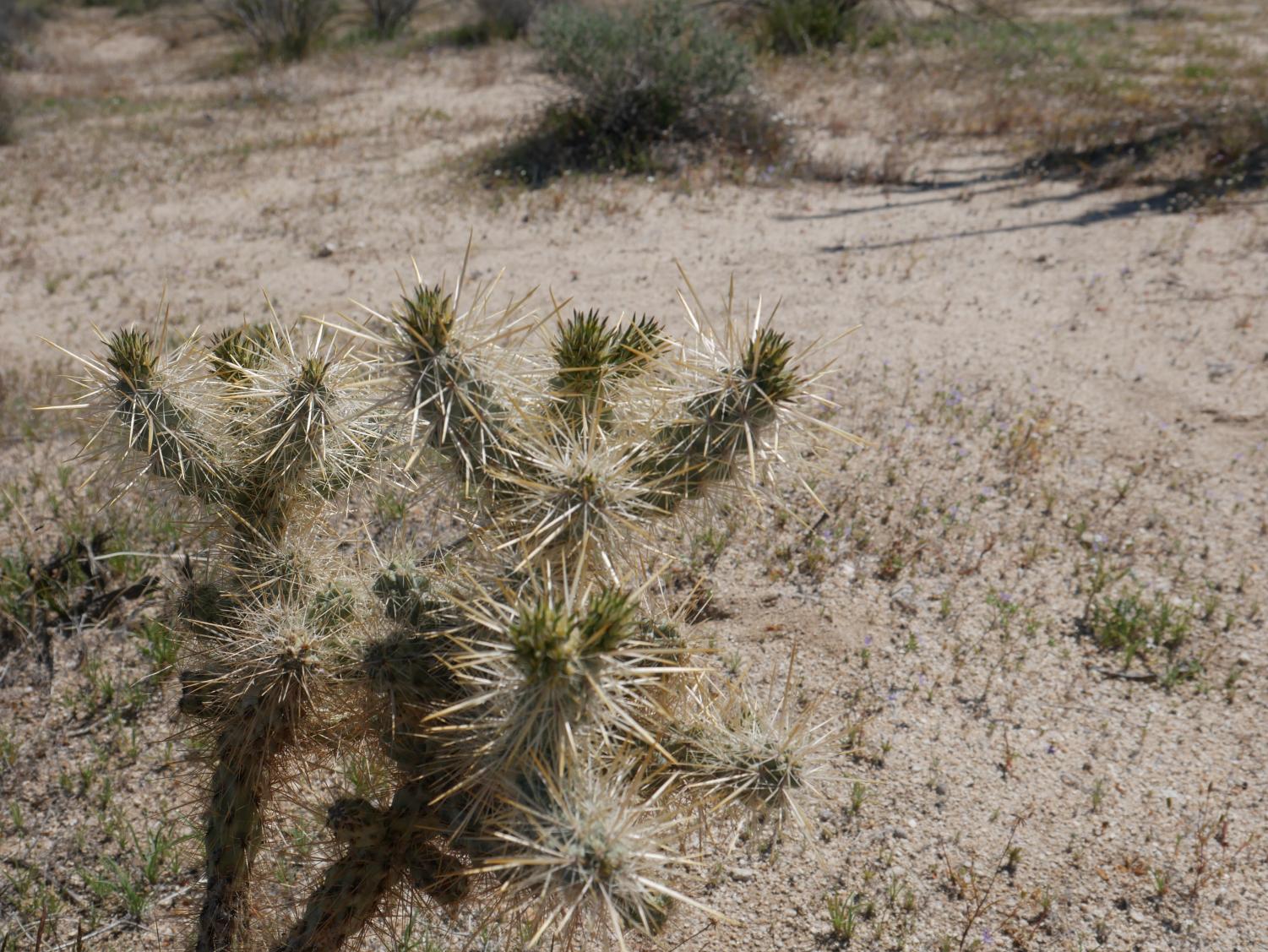The Desert Still Blooms
Ocotillos without the bright green look of the stem would look like nothing but a dead tree. These fascinating plants can grow to be 6-15 feet tall.
The natural beauty of the Earth always ceases to amaze those who really appreciate it.
With week eight of school closure underway, all students can think about is homework, missing friends, but most importantly summer. No one can wait for quarantine to be over, but Mother Nature is enjoying the delay of work in big factories and pollution.
With all the recent rain and sunshine, flowers are blooming everywhere. Being in Southern California means having the ability to see all different kinds of flowers, from daisies in our own backyards to the various desert flowers out towards the east.
The Desert Bloom, also known as the wildflower bloom, usually occurs from late February and lasts until the beginning of April. Previous years brought a “super bloom”, which is when the ground is immersed in wildflowers. Some of the best places to see the bloom are Anza-Borrego National Park, Joshua Tree National Park and Death Valley National Park.












